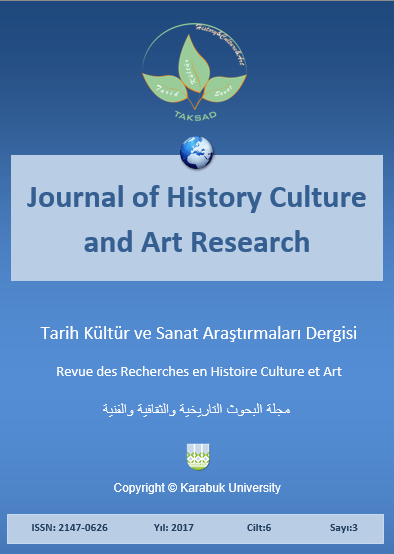Investigation of the Factors Affecting the Identity Crisis in Contemporary Designs and Architectural Styles of Iran
DOI:
https://doi.org/10.7596/taksad.v6i3.982Keywords:
Architecture, Urbanism, Identity, Plan, Style, Contemporary, Iran.Abstract
Architecture and urbanism in Iran during the contemporary period have been influenced by inside and outside social and economic developments. These changes are so fundamental that have caused many challenges and styles in architectural space of Iran, both in conceptual and physical space. Indeed, objectified areas caused by intellectual movements such as: West-oriented, economic-oriented can be known as the root of identity crisis for Iranian cities from the architecture and urbanism perspective. The most important weaknesses and problems in today Iranian architecture include: lack of attention to cultural infrastructures, capability of integrating all cultural spheres, paying too much attention to the economic aspects in the constructions, lack of commitment in some of the builders, weakness of the management system and monitoring in the field of architecture and urbanism, lack of explanation of Iranian traditional architecture patterns, consumable culture of Iranian society, lack of attention to the potential of traditional tissues to integrate with today's architecture and more. While this article is presenting and checking the list of factors affecting this process - identity crisis - attempts to seek its causes and ultimately preparing the ground for achieving overcoming solutions of this crisis.
References
Akhtarkavan, M. (2007). Crisis in architecture and contemporary thought. Journal of architecture and construction. The spring 86.
Castells, M. (2001). The Information Age: Economy, Society and Culture (of identity). Chavoshian translation. Tehran: The new plan publishing.
Ebrahimi, S. (2009). Architecture and challenges facing the transition to the network society. Journal of Architecture. Spring and summer of 88, 94 and 95.
Falamaki, M. (2000). Urban restoration, Perspectives and Concerns. Hftshhr quarterly. The first issue.
Ghorbaniyan, V. (2004). Principles and concepts in the contemporary architecture of the West. Cultural Research Bureau in Tehran.
Habibi, M. (2006). Description of architecture and urban intellectual trends in contemporary Iran. Cultural Research Bureau in Tehran.
Hall, E. T. (2005). After hiding. Translation Tabibian, Tehran: Tehran University Press.
Hight, C. & Chris, P. (2011). Collective Intelligence in Design. AD magazine, volume76, no5.
Lehman, J. (2006). Deconstruction of Durkheim (cash Psapsa structural). Translation named fashioned. Tehran: Reed Publishing.
Mahdavinezhad, M. J. (2004). Islamic Architecture wisdom, spiritual Zhrfsakhthay search in Islamic architecture. Fine arts, 19, 58-59.
Naghizadeh, M. (2000). The relationship of identity, tradition and modernity Iranian architecture with modernism. Fine Arts, 7, 63-64.
Pakzad, J. (2006). Face of the city, that you understand what Kevin Lynch, The settlements. Tehran.
Parvizi, E. (2009). National architecture from the perspective of cultural identity. National Studies.
Salingaros Nikos A. (2012). Design methods, emergence, and collective intelligence. Department of Applied Mathematics. San Antonio: University of Texas.
Downloads
How to Cite
Issue
Section
License
All papers licensed under Creative Commons 4.0 CC-BY.- Share — copy and redistribute the material in any medium or format
- Adapt — remix, transform, and build upon the material for any purpose, even commercially.
Under the following terms:
Attribution — You must give appropriate credit, provide a link to the license, and indicate if changes were made. You may do so in any reasonable manner, but not in any way that suggests the licensor endorses you or your use.
- No additional restrictions — You may not apply legal terms or technological measures that legally restrict others from doing anything the license permits.







